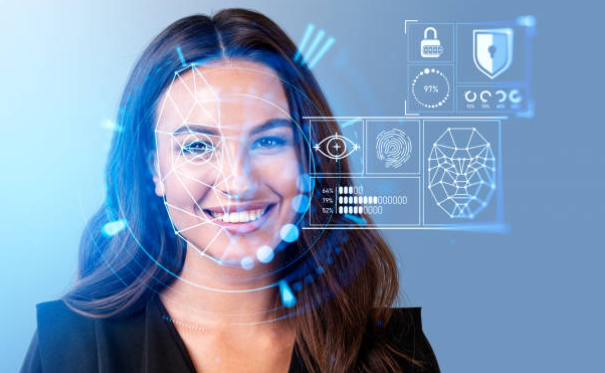Securing online information and restricting imposters are every firm’s main challenges in the digital world. They quickly take over bank accounts by altering information with real customers and withdrawing all their money. To reduce these activities, banks and other organizations are now moving towards implementing face liveness detection as this is one of the emarkable biometric verification services. The face recognition market is growing, achieving $5 billion in 2022. This blog will provide a complete guide on how face liveness detection works and its importance in different industries.
What is Face Liveness Detection?
Scammers know how to dodge firms and individuals through different means, so AI researchers propose face-liveness detection solutions that aren’t easy to deceive. Face liveness detection verifies if the user is live or fake by giving them certain commands, such as blinking their eyes and nodding their heads. By doing so, scammers can’t show fake images in live actions. Then, the system automatically compares live information with the previous information in the database. If the system detects any spoofing activity, it quickly sends a notification to an employer or any person who uses the server.
Categories of Face Liveness Verification
The following are two essential categories of face liveness verification:
- Active Liveness Detection
The system detects any signs of life in active liveness detection and asks the customer to upload their current selfie or video for verification. The system will pass the customer if they are legitimate and send any warning sign incase of spoofing activity.
- Passive Liveness Detection
Passive liveness detection works in the server background. Neural networks understand if the customer who is uploading an image is real or fake. The system also detects the light in the background, shadow, and the customer’s skin texture.
Importance of Liveness Detection Technology
Liveness detection technology is important in every industry as firms rapidly implement this to restrict spoofing activities. It helps in:
- Fraud Detection
Face ID check technology quickly detects fraud attempts and prevents firms from losing their financial and confidential information. The system also ensures that the user presenting information is live and real.
- Improved Security
In the digital world, securing information is challenging for imposters, as they use different tactics to deceive others. Impersonation is their famous crime, and liveness detection easily detects it.
- Efficient Liveness Detection Process
Efficiency is every industry’s primary concern as it helps improve firm productivity. Banking authentication procedures are too hectic and lengthy in this busy world. Remembering long and multiple passwords is difficult. So, liveness detection helps them to omit long queues and reduces the time required for the verification procedure. This system provides an intuitive and faster verification process.
Working of Face Liveness Detection
Liveness detection verifies if the user is real or fake and if the data being presented is authentic. The following are typical methods used in face liveness detection:
- Motion Analysis
- 3D Depth Sensing
- Challenge-Response Test
- Texture Analysis
- Machine Learning AI
- 3D Depth Sensing
3D depth sensing is usually done through mobile phones. In the market, cell phones that were available had low fair resolution and without this feature. However, it has changed in the past few years. Their algorithms now require user communication and understanding of 3D concepts. That’s why they are providing advanced verification and liveness detection in the digital age.
- Motion Analysis
Their work is to track and monitor the subject’s movement as the face liveness detection system will ask the user to do certain actions such as nodding their head and blinking their eyes. It detects involuntary and natural movements that can’t be replicated or spoofed.
- Challenge-Response Test
Face liveness detection has a challenge-response test, as the system asks the customer to perform a few actions, including speech recognition. Afterwards, the system will automatically determine liveness.
- Machine Learning
Artificial intelligence and machine learning use modern and sophisticated methods to detect image changes, which can result in presentation attacks. They also detect textual differences and 3D structures in spoofing activities that human eyes can’t see.
- Texture Analysis
This process includes investigating the minute details of the user’s fingerprints and skin as genuine users exhibit perspiration patterns and unique features that scammers can’t change with any image or video.
Key Takeaways
With the technological transformation, scammers also learn many ways to deceive systems. For example, fraudsters want to enter into the firm’s systems to gain their confidential and sensitive information. That’s why AI researchers have introduced a solution that many organizations are implementing which is face liveness detection.
Its importance and remarkable work can’t be denied, as it provides accurate results in detecting spoofing activities. Methods of advanced liveness detection prove to be effective, including motion analysis, 3D depth sensing, challenge-response tests, texture analysis, and machine learning. By providing seamless fraud detection and improved security facilities, face liveness detection proves its authenticity.
